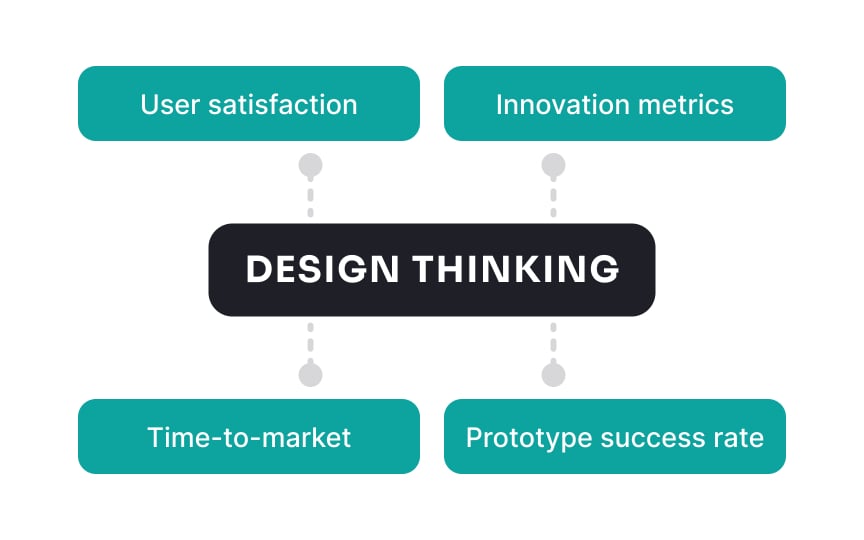Common misconceptions about design thinking
Despite its proven effectiveness, design thinking faces these common misconceptions:
- Measurement myth: It's a myth that design thinking's impact can't be measured. Metrics like user satisfaction, prototype success, time-to-market, and innovation rates provide clear, measurable insights.
- Results myth: Some say design thinking doesn't deliver. That's not true. Its iterative nature drives creative solutions, meets user needs, and continually improves products, leading to tangible success.
- Growth myth: Contrary to some beliefs, design thinking significantly drives growth. It boosts customer satisfaction, sparks innovation, and elevates user experiences, fueling business expansion.
- Risk myth: While design thinking involves experimentation, it's not overly risky. Its step-by-step approach, with constant refining and testing, effectively manages and minimizes risks.[1]
References
- The Design Thinking Process: 5 Steps Complete Guide | CareerFoundry


